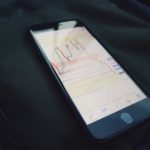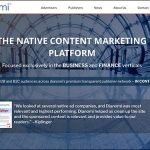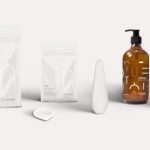My Retina Tracker Crowdsources Blind analysis individuals
vision researchers are collecting knowledge with the assist of the people who comprehend essentially the most about blindness—patients.
July 14, 2015
Curing blindness is, in part, an information-crunching downside. a whole lot of genetic mutations, and ensembles of mutations, can lead to vision loss. sorting out cause and impact requires digging through affected person information to find patterns and discovering the appropriate individuals for attainable treatments, akin to replacing defective genes or regrowing lost tissue with stem cells. a web-based patient registry, MyRetinaTracker.org, crowdsources this information assortment by means of recruiting the people who know probably the most about blindness—the people who undergo from it.
thus far, only a few illnesses that impact imaginative and prescient will also be fastened. doctors can transplant corneas (the outer lens of the eye), and even replace the lens within the eye with an artificial version. What they are able to’t yet restoration is the retina—a layer of cells lower than half of a millimeter thick at the back of the attention that turns light into signals within the mind that become images.
Most challenging are about 20 uncommon inherited genetic diseases such as retinitis pigmentosa (RP), which begins by killing cells on the periphery of the retina and works its method inward. Any of at least 84 genes can lead to RP (extra keep being discovered). only one gene appears to lead to most cases of Stargardt’s disease, which usually begins attacking the guts of the retina and works its method outward. but it surely’s a monster gene, containing 6,819 base pairs that code for proteins. Mutations on different parts of that gene impact the severity of Stargardt’s and may lead to other illnesses, including RP.
“It comes down to which specific gene you will have and which explicit mutation on which gene you’ve,” said Brian Mansfield, deputy chief research officer on the foundation preventing Blindness (FFB) in Baltimore.
opposite the plethora of motives is the paucity of sufferers. About 200,000 americans have a rare inherited retinal disease, out of the greater than 300 million individuals who live in the U.S.
Mansfield is taking over the problem of finding them with My Retina Tracker, an internet registry for patients with retina diseases to retailer their medial records and provide anonymous data to researchers. FFB tender-launched My Retina Tracker in June 2014, with no press protection beyond just a few area of interest web pages. yet it still received greater than 2,600 enrollees in the past 12 months.
FFB is now finalizing a care for a advertising agency—which Mansfield wasn’t licensed to name—for an incredible recruitment campaign that he expects to launch within the fall. FFB does not want knowledge from all 200,000 individuals within the U.S. to better be mindful connections between gene mutations and illnesses. “If we were ready to get forty,000 to eighty,000 in our registry, we might be feeling just right,” Mansfield stated. The site is open to any person on this planet (despite the fact that it’s simplest in English at existing). still, getting that many people concerned is a frightening job.
My Retina Tracker hooks sufferers in with a few incentives. the simple one is a free situation to maintain all their clinical information—including input from medical doctors—that they are able to access anyplace. that’s the only advantage that FFB is allowed to mention beneath federal tips for human scientific trials.
the enormous, though lengthy-shot, incentive is that by uploading their clinical records and answering questionnaires, patients could get the eye of researchers who could also be doing medical trials for treating their illness. The extra information patients enter, the extra fascinating they are to researchers. that features getting their family to sign up. “Having other genetically related members of the family, even though they do not need the disease, can be helpful in working out what gene mutation could be inflicting the disease,” said Ben Shaberman, director of science communications at FFB at its annual Visions convention in Baltimore final month.
My Retina Tracker also takes in subjective knowledge from sufferers about how the disease affects everyday actions like studying. patients can probably add much more element, at their enjoyment, than a harried expert can write down during an exam.
docs can enter data from appointments, too. by using encouraging members to maintain updating their files, My Retina Tracker modifications from a static picture of a disease to a longitudinal learn about that shows how the disease progresses over time.
How practical is a web software for folk dropping their imaginative and prescient? Many people who find themselves legally blind (with 20/200 imaginative and prescient or worse, imaginative and prescient that can not be corrected) can nonetheless use computer systems and smartphones, every so often touching their nose to the monitor to peer. Others use monitor-reading device that converts textual content to speech.
to build My Retina Tracker, FFB shrunk with PatientCrossroads, which has developed affected person registries for different conditions and businesses. however the undertaking took about nine months longer than expected, Mansfield estimates, since the website needed to be coded to work with monitor-reading programs similar to JAWS and Window-Eyes.
My Retina Tracker isn’t the primary patient database for eye diseases. “There are various investigators and research institutions that do maintain registries,” stated Ben Shaberman. “however those are maintained throughout the establishments, and they don’t [necessarily] make their data . . . to be had to different analysis communities.”
My Retina Tracker is relatively open when compared. Researchers have to use for access to the anonymized data, but FFB has set a low barrier to entry. “We be certain that that they’ve a motive to look at it, that they aren’t looking to hack it,” stated Mansfield. Researchers can already do complex boolean queries combining both multiple knowledge fields, akin to illness kind, age, gender, ethnicity, and site (right down to the state degree) and solutions to any of the dozens of questions My Retina Tracker asks members. Researches can then seem thru particular person patient recordsdata, although the names are removed and replaced with identification numbers.
Researchers working on authentic studies who in finding specific sufferers they’d like to recruit for a trial supply the identity numbers to Mansfield, considered one of most effective two individuals who can join a bunch with a reputation. (The registry coordinator is the opposite.)
He then contacts the affected person—or constituent, as he calls them—and leaves it up to them if they need to get in touch with the researcher. “It at all times leaves choices in the constituent’s arms,” mentioned Mansfield.
that is a potential, but also a weak point, of this system. My Retina Tracker can achieve so much, with tens of thousands of individuals contributing information. but they’ve to wish to take part.
fast company , read Full Story
(70)












